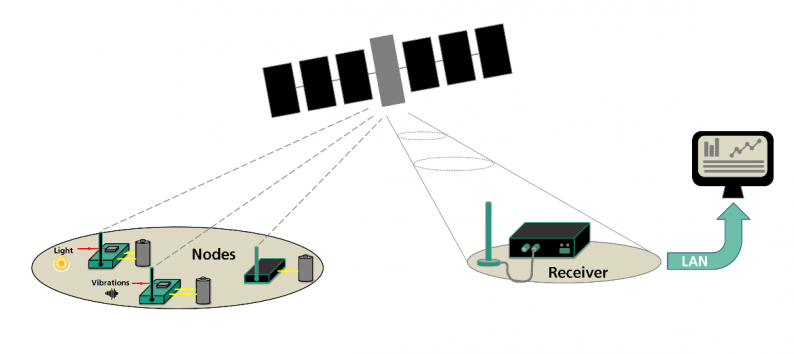
-
StatusCompleted
-
Status date2020-12-16
-
Activity Code7B.043
The objective of this project is to design and demonstrate solutions for compact and energy efficient Machine-to-Machine (M2M) user terminals for direct, massive uncoordinated access via satellite.
A novel access scheme is developed for optimizing energy management at physical and access layer, looking at a global access network and targeting low duty cycle and volume traffic.
Beside the smart energy management, the terminals shall be able to do some kind of energy harvesting for extending significantly the mean time between maintenance of the devices.

The project task are the following:
- System scenario, use case definitions, and technical requirements
- Consolidated air interface design specifications and functional benchmarking
- Detailed user terminal design
- User terminal prototype
- Test plan and verification procedures
- Verification platform
- Test campaign results
Machine-to-Machine Communications (M2M) will interconnect billions of devices for a wide range of applications with low duty cycle and low volume traffic over the Internet of Things (IoT). A high number of small IoT nodes will serve for monitoring applications in remote locations, where in general the energy supply over the power grid is not possible. The maintenance of these devices will be difficult or not possible. These IoT nodes can only accommodate batteries with limited capacity, which is a challenging constraint for the energy supply.
- Extending significantly the mean time between maintenance
- Reducing the maintenance costs
- Increasing live time of terminals
- Enhanced system capacity (due to efficient resource sharing of the nodes)
- Enabling resource sharing among a large number of uncoordinated nodes
- Energy efficient air-interface
- Energy harvesting capabilities
- Smart battery management
The test & verification procedure of the entire system is performed with an entire setup / testbed of various different elements/devices as shown below to ensure compliance to the system requirements.

This testbed is used to perform at least:
- End-to-end physical and MAC layer tests
- Demodulator input signal quality measurements
- Physical layer adjustments
- Channel performance measurements
- Packet loss statistics measurements
- Energy consumption statistic measurements
- Battery capacity estimation measurements
- Emulation of satellite channel models
|
ID |
Meeting |
Date |
|
KO |
Kick-Off Meeting |
3-Oct-2018 |
|
SRR |
System Requirements Review |
27-Nov-2018 |
|
TSR |
Technology Selection Review |
17-May-2019 |
|
VRR |
Verification Readiness Review |
25-Feb-2020 |
|
FR |
Final Review |
23-Jun-2020 |
Evaluation of use cases was performed and the most promising use cases were selected. From these use cases, the system requirements were deducted:
- Suitable frequency bands
- regulatory requirements to the specific frequency bands
- suitable combinations of space segment architectures
- terminal design aspects
- waveform selection
For the TSR milestone, strong emphasis laid on the performance comparison of candidate waveforms and systems. As a result, a slightly modified version of ETSI standard TS-UNB, called “TS-UNB-S” was selected as suitable communication system.
For the VRR milestone, the focus was on
- design and development of the energy-efficient IoT-terminals based on TS-UNB-S,
- design and development of the system verification environment.
After that, the verification process of the terminals and the emulation environment was successfully executed. The results were presented at the FR milestone meeting to the esa project officers. The activity can be seen as successfully closed.
Due to the current Corona/Covid-19 situation, final presentation and the demonstration at esa ESTEC facilities is postponed towards the next months.


